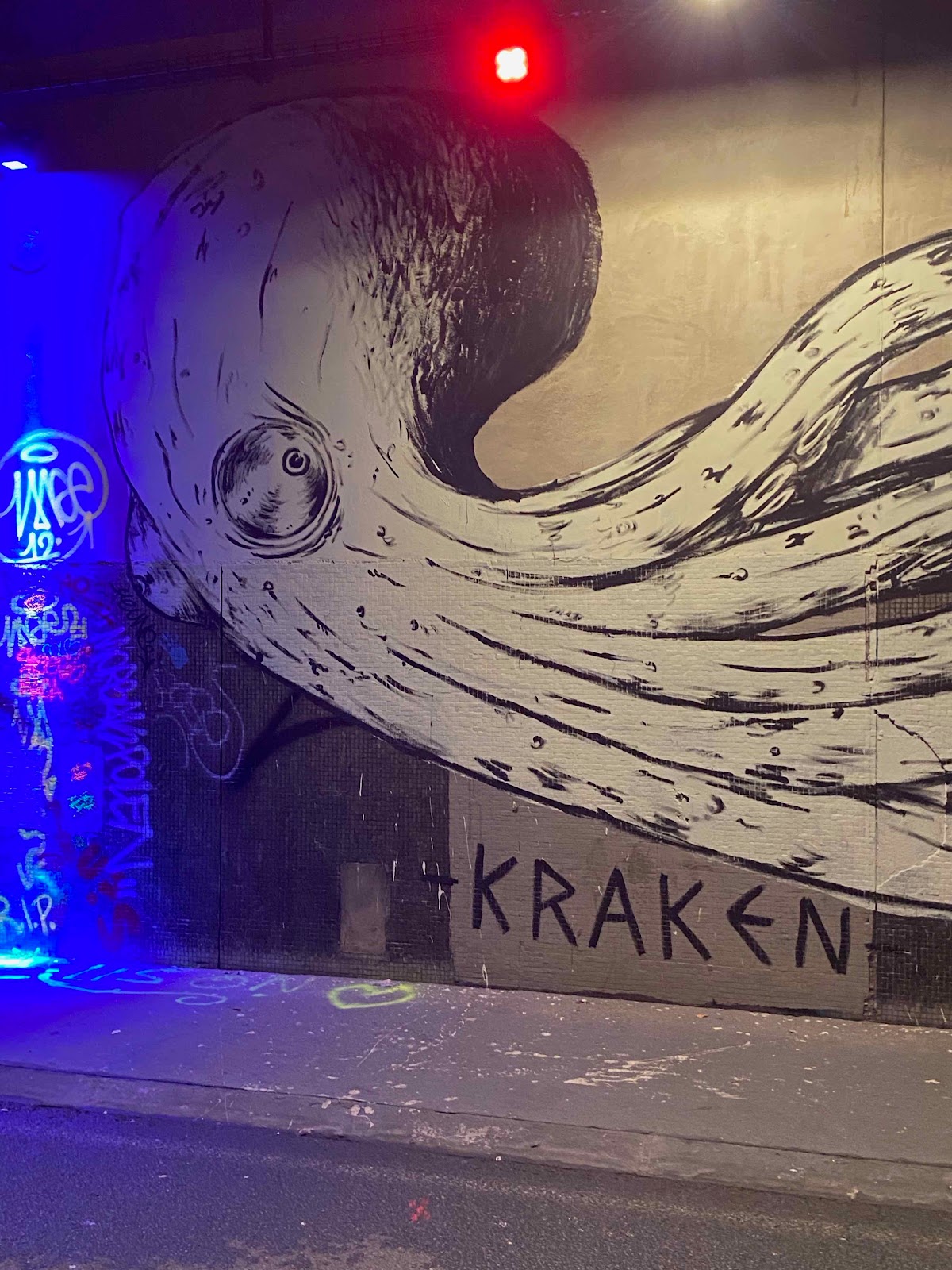Several years ago, Paris closed a tunnel for cars that is more than a mile long on the north bank of the Seine. The tunnel runs between Pont Neuf and Jardin Tuilleries. The city government opened the tunnel 21 July of this year to bicycle and pedestrian traffic.
Before the tunnel opened artists were given forty-meter long stretches of concrete wall four meters high to paint--whatever. Street artists were also given forty-meter wall sections for their art.
The result is hundreds of strange and beautiful and vivid works of art lining walls. My late afternoon walk through the tunnel was noisier than I expected because nearly all of the bicycles going though the tunnel were commuters on electric bikes. I counted five pedal bikes in a half hour. Bikes were also far more numerous than pedestrians.
The ends of the tunnel are beautiful parts of the Paris landscape. Musee D'Orsay is on the south side of river opposite the Jardin Tuilleries entrance. Ile de Cite and Pont Neuf are at the east end of the tunnel.





































